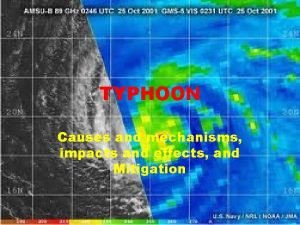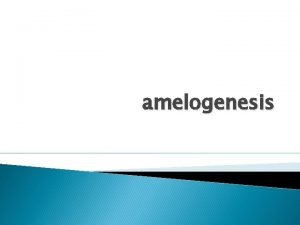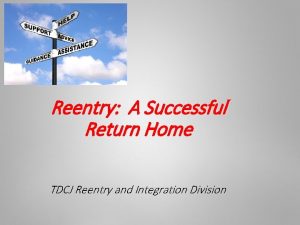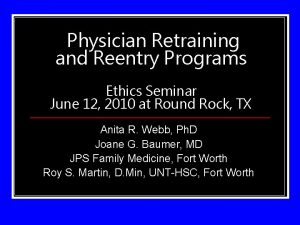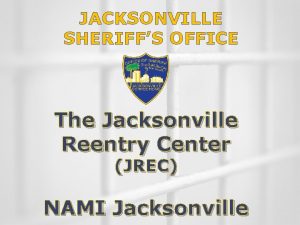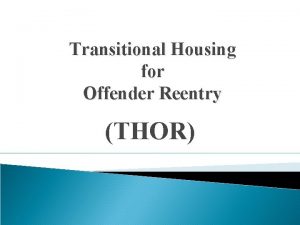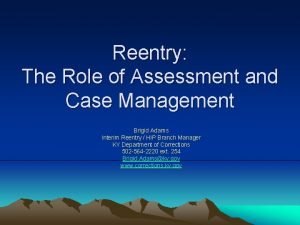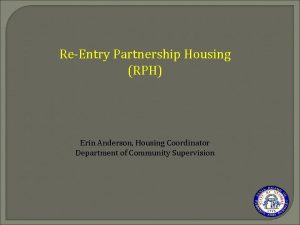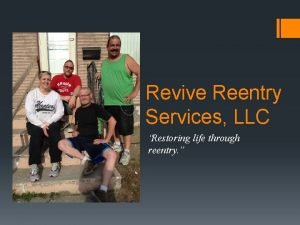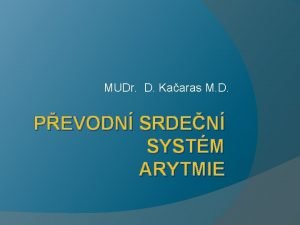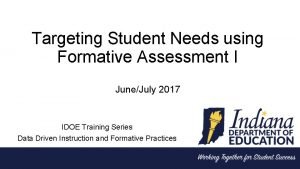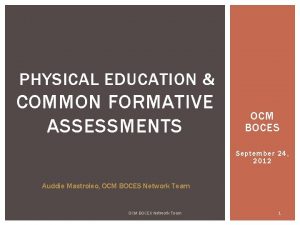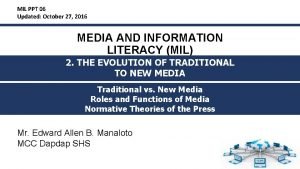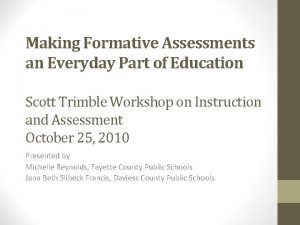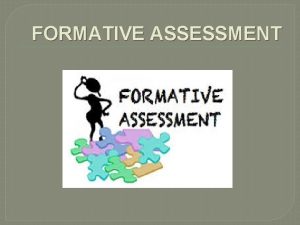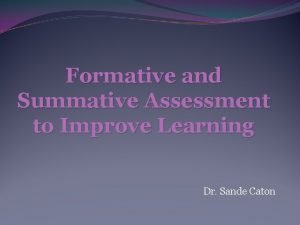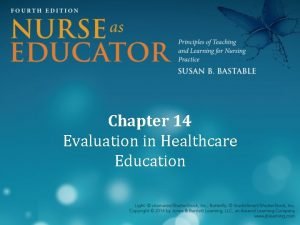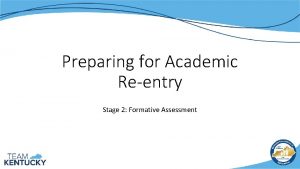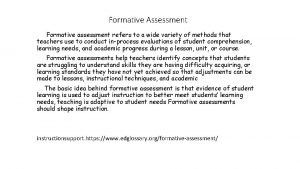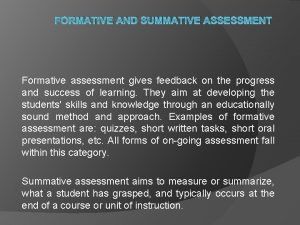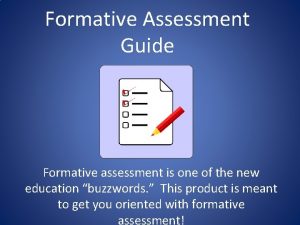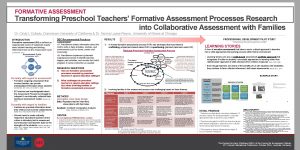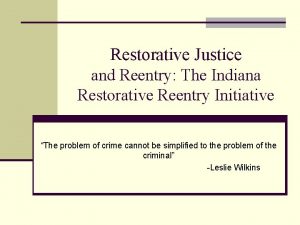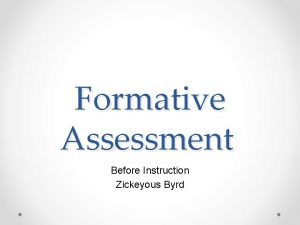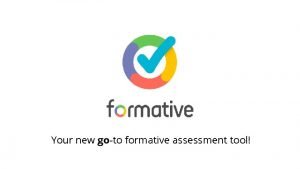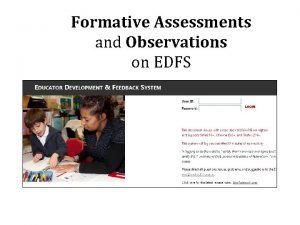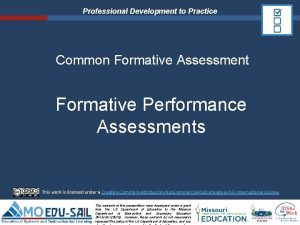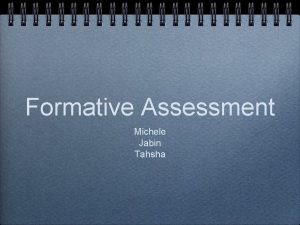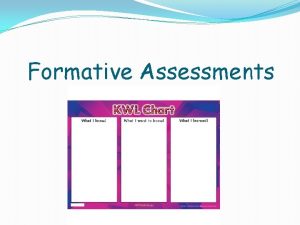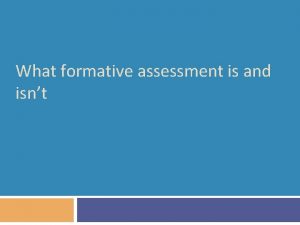Preparing for Academic Reentry Stage 2 Formative Assessment



















- Slides: 19

Preparing for Academic Re-entry Stage 2: Formative Assessment

Academic Re-entry Stage 2 • Purpose of Stage 2 is to: • Define formative assessment and explain the benefits for students and teachers • Describe four key strategies that support the formative assessment process • Identify instructional approaches for taking responsive action to address the needs of all learners


Stage 2: Formative Assessment • Four key strategies: • Clarifying and sharing learning goals and success criteria • Eliciting evidence of student understanding • Providing feedback that moves learning forward • Using peer- and self-assessment to develop student ownership

Identify the Gap

Stage 2: Formative Assessment • Strategy 3: Providing feedback that moves learning forward • Provides students with information they need to understand where they are in their learning and what to do next • Increases student motivation • Students feel they have more control over their own learning when they understand what to do and why they are doing it

Stage 2: Formative Assessment • Strategy 3: Providing feedback that moves learning forward • Teachers should provide feedback that: • Relates student work to the learning goals and success criteria • Students can use to take next steps • Supports students in managing their own learning

Stage 2: Formative Assessment • Strategy 3 considerations: • How will you ensure that your feedback is linked to the learning goal and success criteria? • How will you provide feedback in a timely manner that allows students to take action and apply the feedback? • Text annotations: Notes or comments added digitally to written assignments • Audio or video file: Could be provided to individual students or to small groups of students requiring the same type of feedback • Rubrics: Online scoring guides aligned to the success criteria to evaluate students’ work

Stage 2: Formative Assessment • Strategy 3 considerations: • How will you intentionally build in time for students to respond to and apply feedback to their learning? • How will you structure opportunities to have uninterrupted time with individuals or groups of individuals to provide feedback? • In the virtual setting, how will you structure time and opportunity to meet with individuals or small groups to provide feedback?

Stage 2: Formative Assessment • Strategy 4: Using peer- and self-assessment to develop student ownership • Helps students monitor, direct and regulate their own actions as they progress toward the learning goals • Peer assessment helps students to gain increased clarity on the learning goals and success criteria • Self-assessment allows the students to apply their understanding in the learning goals and success criteria to their own work • Requires a classroom culture characterized by supportive, collaborative relationships to develop trust

Stage 2: Formative Assessment • Strategy 4: Using peer- and self-assessment to develop student ownership • Ideas for supporting peer feedback • Model providing feedback • Use feedback prompts and protocols • Analyze strong and weak feedback

Stage 2: Formative Assessment • Strategy 4: Using peer-and self-assessment to develop student ownership • Self-assessment insights: • Teachers need to explicitly teach and model self-assessment • Students need to apply all three questions from the feedback loop to their own work • Where am I going? • Where am I now? • Where to next? • Key practice in helping students become independent and self-regulated learners

Stage 2: Formative Assessment • Strategy 4 considerations: • How will you build a classroom community, in both face-to-face and virtual settings, that supports peer- and-self assessment? What classroom norms, routines and procedures are needed to build trust and a supportive environment? • How will you provide opportunities for peer assessment? • Ideas for virtual setting: • Collaborative documents such as Google Docs or One. Drive • Group discussion using videoconferencing or a forum with screen-sharing capabilities

Stage 2: Formative Assessment • Strategy 4 considerations: • How will you build in opportunities for students to self-assess and reflect on the learning goals and success criteria? • Possible ideas for virtual setting: • Format the success criteria into a tool students can use as they do their lesson or assignment. Possible examples include a simple bulleted list, a checklist or a rubric. • Include one or more self-assessment loops in the assignment directions where students review their work using the tool and make adjustments to their work. • Include a “mid-point reflection” in a document-based lesson or assignment or include one or more pause points in a video or slide-based lesson or assignment.


Stage 2: Formative Assessment • Taking responsive action • After interpreting the evidence and determining the status of student learning, teachers need to take some action in response to students’ immediate learning needs. Based on the evidence the teacher may: • Take action in the moment • Use the information in planning the next lesson • Determine that student learning is on track and continue with the lesson as planned

Stage 2: Formative Assessment • Possible instructional adjustments include: • Modeling • Prompting • Questioning • Giving Feedback • Telling • Explaining • Directing


Questions? Please send questions to standards@education. ky. gov
 Formative stage of typhoon
Formative stage of typhoon Ameloblast life cycle
Ameloblast life cycle Tcoommi program
Tcoommi program Physician reentry program
Physician reentry program Jrec jacksonville
Jrec jacksonville Thor directory
Thor directory Reentry case management
Reentry case management Reentry partnership housing
Reentry partnership housing Grizzly energy, llc
Grizzly energy, llc Reentry fenomen
Reentry fenomen Formative assessment process
Formative assessment process Common formative assessment examples
Common formative assessment examples Mil ppt
Mil ppt Media literacy and information literacy venn diagram
Media literacy and information literacy venn diagram Who do you think are people media?
Who do you think are people media? Kwl chart formative assessment
Kwl chart formative assessment Formative evaluation meaning
Formative evaluation meaning Formative beurteilung
Formative beurteilung Facets of formative assessment
Facets of formative assessment Difference between formative and summative assessment
Difference between formative and summative assessment
